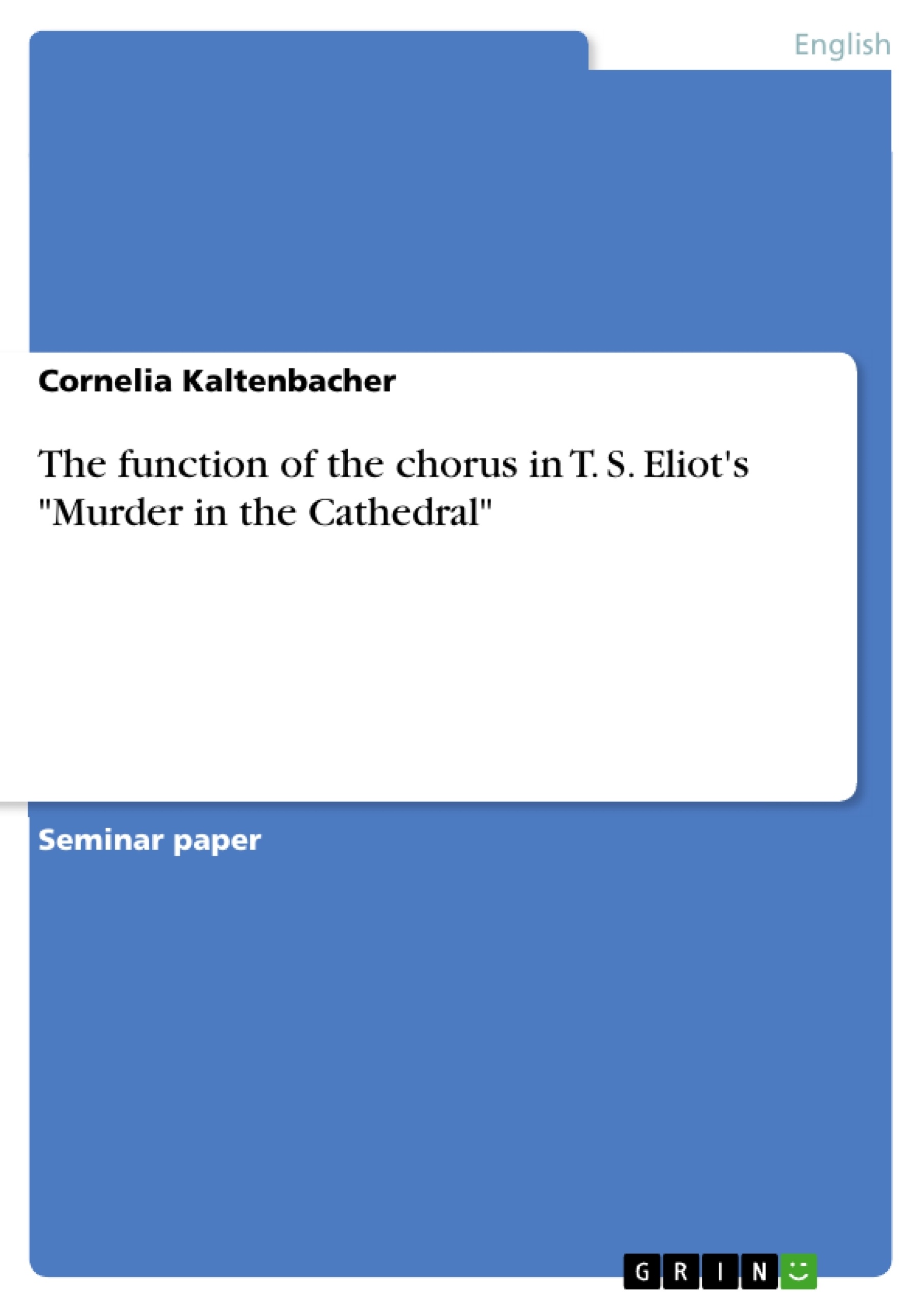1935 is the year of Eliot’s writing “Murder in the Cathedral”, the first religious verse drama in his career as dramatist. Writing his own critical essay on “Murder in the Cathedral”, Eliot focuses on a lot of topics and difficulties, writing a first drama in verse. One of the topics Eliot refers to in his essay “Poetry and Drama” is his reflection on the Women Chorus in “Murder in the Cathedral” and their dramatic function during the play. Reflecting on this topic and giving an answer to the question, if there are other functions, which can be attributed to the Chorus, will be my job in this paper. But before dealing with the actual topic, I will use this introduction, which I consider the first unit of my paper, in order to give you an overview of the units and topics of the paper.
Table of Contents
- Introduction
- T. S. Eliot – A short biography
- The Chorus in “Murder in the Cathedral”
- The idea of “Chorus” in Eliot's “Murder in the Cathedral”
- The profane function of the Women of Canterbury
- The spiritual or mystical function of the Chorus
- The philosophical function of the Women Chorus
- The dramatic function of the Chorus
- Conclusion - Personal Notes
- Consulted works
Objectives and Key Themes
This paper examines the function of the Chorus in T.S. Eliot's "Murder in the Cathedral," focusing specifically on the Women of Canterbury and exploring their roles within the play. The paper aims to analyze the various functions attributed to the Chorus, exploring its profane, spiritual, philosophical, and dramatic dimensions.
- The historical and literary context of T.S. Eliot's work, particularly "Murder in the Cathedral"
- The development of Eliot's artistic and intellectual journey, including his Christian conversion and its influence on his writing
- The Chorus as a dramatic device, exploring its origins in Greek theatre and its unique adaptation by Eliot
- The multifaceted nature of the Chorus, examining its functions within the play's narrative, thematic, and philosophical dimensions
- The personal interpretations and conclusions drawn by the author regarding the Chorus's significance in Eliot's "Murder in the Cathedral"
Chapter Summaries
- The introduction provides an overview of the paper, outlining its structure and key topics. It establishes the question of the Chorus's function as the central focus of the study.
- Chapter 2 offers a concise biography of T.S. Eliot, highlighting the complexities of his life and work. The chapter connects his artistic and intellectual development to his dramatic output, specifically "Murder in the Cathedral."
- Chapter 3 delves into the analysis of the Chorus's function in "Murder in the Cathedral." It begins by examining the concept of the Chorus and its origins in Greek theatre, distinguishing Eliot's Chorus from its classical counterpart. The chapter then investigates the Chorus's profane, spiritual, philosophical, and dramatic functions within the play.
Keywords
Key themes and concepts explored in this paper include T.S. Eliot, "Murder in the Cathedral," Chorus, dramatic function, profane, spiritual, philosophical, Women of Canterbury, Greek theatre, Christian conversion, literary analysis, and interpretation.
- Quote paper
- Cornelia Kaltenbacher (Author), 2004, The function of the chorus in T. S. Eliot's "Murder in the Cathedral", Munich, GRIN Verlag, https://www.grin.com/document/43527



